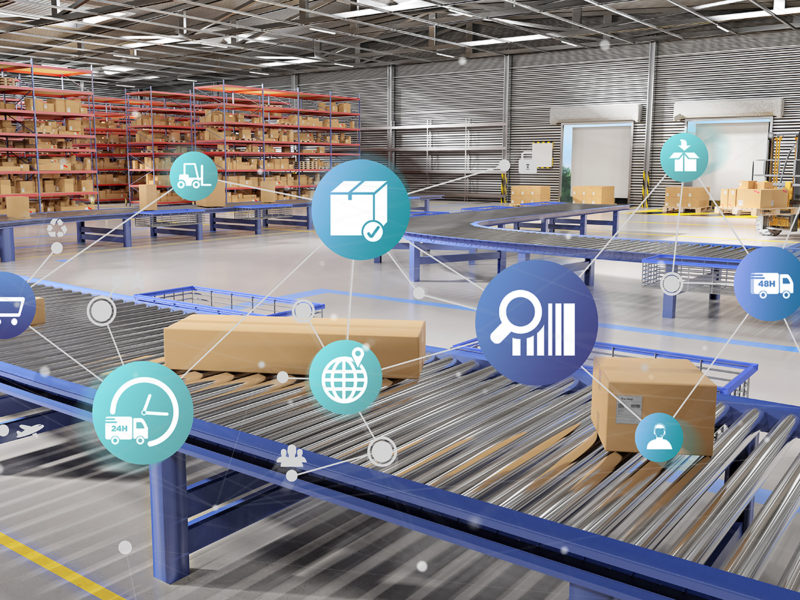Accounts receivable is one of the least automated processes in any business, and during a time of disruption — such as, say, a global pandemic — this can result in reduced efficiencies and delayed payments. All of which can negatively impact the bottom line.
However, distributors looking to get paid faster while also cutting costs from their laborious AR departments have options for remedying this situation, according to Jon Seaman, AR partner manager and senior account executive, Esker, in the recent MDM Webcast, Create a Predictable Balance Sheet in Unpredictable Times.
“As one of the largest assets on the balance sheet, in a department that deals directly with customers, AR is of critical importance to an organization,” Seaman said on the webcast. “Yet, according to a study by the Association for Information and Image Management (AIIM), 50% of all businesses still use manual processes to manage their receivables. This is at a time when the use of electronic applications is prevalent in other departments. For example, 83% of sales teams use CRM solutions to manage their workflow. The big question is why does AR continue to remain an understaffed department that relies on inefficient and unaccountable processes?”
One problem is that AR tends to get lost in the shuffle, especially with companies such as wholesale distributors that are focused primarily on their outside sales processes. A simple yet effective solution: Bring your company’s AR process up to date through automation.
“The fact that AR is behind the times isn’t always obvious, given that most organizations have an ERP system in place providing basic electronic workflow functions,” Seaman said. “The problem is, these tools can only systematize so much. Without a more robust solution to minimize manual tasks across the board, it can mean higher operational costs, lower staff productivity, increase in days sales outstanding (DSO), greater risk of regulatory non-compliance, lengthened dispute resolution, limited control over post-sale collections, no visibility for data tracking or reporting, and decreased customer satisfaction.”
The Eight Strategies
But this doesn’t have to be the case. Seaman outlined eight ways that distributors can take charge of their AR processes and reverse those common trends. Here they are:
- Embrace technology — “This strategy is the linchpin that holds all other HR management strategies together,” Seaman said. “Today, too many HR departments view technology as a threat to their existing staff rather than what it more accurately represents — a highly specialized team member that can help them.”
- Hold your staff accountable — “Analytics and breaking down numbers is a huge part of being able to hold your staff accountable,” Seaman said. “Being able to dive into what is going on internally is very important and can play a huge part in getting customers to pay you faster, lowering administrative costs, more efficient collections, building better customer relationships and the ability to better retain those customers.”
- Move customers to e-invoicing — “Studies have shown that e-invoicing can result in cost savings of anywhere from 60% to 80% compared to traditional paper-based processes,” he said. “With this in mind, it’s easy to see why best-in-class companies are abandoning the manual mindset. Even though virtually everyone has email capability and internet access, as of 2017, 70% of invoices in the U.S. and Europe were paper-based. The problem with that is manual invoicing is costly and inefficient. Paper-invoice presentment costs more than twice as much as electronic invoice delivery and sometimes even more than that.”
- Overhaul credit management — “With an automated service, dealing with credit applications can become much simpler,” Seaman said. “You can create and customize your credit application templates according to your needs — customer profile, industry, etc. — email or embed the link, easily send the credit app by email from the credit application or through email, or embed the link on your website.”
- Work smarter with intelligent cash application — “By automating this process, these companies can see the following benefits — increased productivity, more efficient collections, better customer relationships and, most of all, better visibility since you’ll know what’s going on at all times with the incoming payments,” he said.
- Optimize collections — “As much as one-third of an AR representative’s time can be spent prioritizing who to call and searching for contact and account information — not exactly time well spent for a department that is usually understaffed and strapped for resources,” Seaman said. “Graphical dashboards help collections have a clear view on what needs to be addressed, all in one single view and one click away. Digitizing and aggregating AR information in a single location, with comprehensive audit trails, provides complete transparency into a company’s receivables.”
- Offer self-service tools — “Approximately 72% of people prefer self-service over phone or email support,” he said. “Failure to meet these expectations means fewer satisfied customers. To provide the best possible experience for your customers, self-service options via a web or online portal allow customers to view and pay invoices online, contact support and resolve disputes, sign up for autopay, apply credits, manage payment preferences and much more.”
- Root cause analysis — “If you want to know why you’re getting paid late, you need to know what’s wrong and where the issue lies,” Seaman said. “You can’t change what you can’t measure, so you need to dive deeper into reasons why your cash has been delayed and adjust accordingly. Automated AR solutions help you avoid playing this guessing game thanks to root cause analysis tools.”
Learn more about implementing these strategies, and how they can help your company, by watching the full webcast, Create a Predictable Balance Sheet in Unpredictable Times.
And be sure to join us Oct. 8 for a deep dive into a related topic, Why Order Management Automation is the Right Move Now. This webcast — also sponsored by Esker — will detail how order management (OM) automation can help you meet evolving customer demands, grow wallet share with existing customers and improve process efficiencies throughout your organization.
Related Posts
-
Let the computer do some of the work by conducting a virtual pilot to sanity…
-
Automated processes like order-to-cash (O2C) can eliminate human errors, reduce costs and strengthen both your…
-
The B2B distribution business is dealing with plant shutdowns, supply chain disruptions and a whole…






